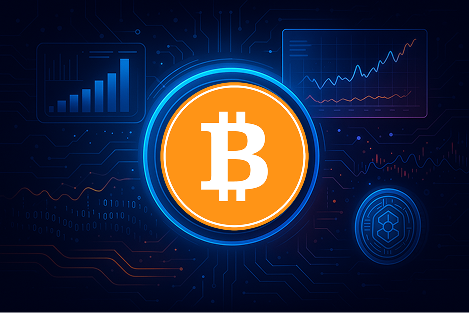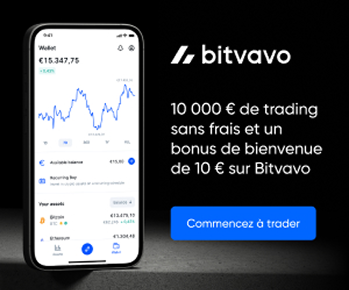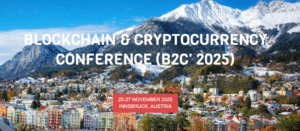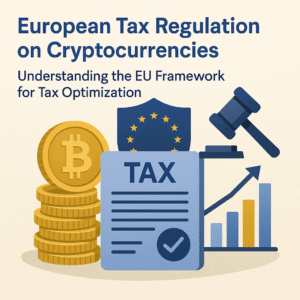Gridcoin Price, Crypto Analysis, and How the GRC Token Works

Learn how Gridcoin works, what the GRC token is for, and how it supports scientific research through blockchain-powered incentives.
Introduction
Gridcoin (GRC) is a unique cryptocurrency that rewards scientific computing via the BOINC network. Unlike traditional mining-based cryptos, Gridcoin incentivizes useful computational work for real-world scientific research. This analysis covers how Gridcoin works, how to buy and use it, its market positioning, and its long-term growth potential.Key takeaways
- Short-term volatility: Gridcoin’s price is sensitive to community activity and BOINC project adoption
- Key influencing factors: Scientific project engagement, regulatory shifts, and network participation
- Long-term growth potential: Strong value proposition linking blockchain with science
- Positioning among major cryptos: Unique model rewarding research instead of raw computational waste
What Is Gridcoin?
- Symbol: GRC
- Category: Proof-of-Stake (PoS) / scientific blockchain
- Primary function: Reward users for computing power used on BOINC scientific projects
How Does Gridcoin Work?
Gridcoin operates on a hybrid blockchain that combines Proof of Stake (PoS) with a scientific rewards system. Blocks are secured using traditional PoS, while GRC rewards are distributed based on verifiable BOINC contributions.Technology Overview
- Blockchain type / consensus: PoS only (formerly hybrid PoW + PoS)
- EVM compatible: No, Gridcoin runs on a modified Bitcoin codebase
- Special features:
- BOINC integration to track and reward computing contributions
- CPID system (Cross Project Identifier) to link users to BOINC accounts
- Fair reward distribution based on validated computational effort
- No oracles, no Layer 2 scalability in current architecture
Utility of the GRC Token
- Scientific rewards: Receive GRC based on verified BOINC project contributions
- Staking: Secure the network and vote on proposals
- Payments: Peer-to-peer transactions within the Gridcoin ecosystem
- Community incentives: Used in community development and governance projects
Key technical takeaways:
- Efficient PoS blockchain model
- Real-world use case with measurable scientific outputs
- No useless energy consumption
- Integrated directly with BOINC for transparency and verification
History and Founding of Gridcoin
Launch date: October 16, 2013 Geographic origin: United States Gridcoin was created by Rob Halförd, a US-based developer, to offer a blockchain solution that funds science rather than draining energy. It began as a hybrid PoW/PoS system but transitioned fully to Proof of Stake in 2018 to reduce energy use.Key Milestones
- 2013: Gridcoin launched with Proof of Work
- 2014–2015: BOINC integration and hybrid reward model introduced
- 2018: Full transition to Proof of Stake; mining replaced by scientific contribution
- 2020–2023: Community governance enhancements, wallet upgrades, BOINC dashboard integrations
Founders and Team
Founding Team
- Rob Halförd: Founder and early developer of Gridcoin. He stepped back from daily operations after the network’s initial deployment, allowing the open-source community to take over development and governance.
What Makes [Nom cryptomonnaie] Unique?
Unique Features of Gridcoin
Innovative Use Cases
- Scientific computing rewards Users contribute processing power to projects like Rosetta@home or Einstein@home. Gridcoin tracks their BOINC stats and issues GRC rewards accordingly.
- Eco-friendly blockchain alternative Unlike Bitcoin, which consumes massive electricity for hashing puzzles, Gridcoin invests that energy into real research, creating an energy-positive model.
- Volunteer science community Gridcoin’s user base includes researchers, tech enthusiasts, and ethical investors focused on global impact. The community creates open-source tools, wallets, and project monitors.
- Community-driven governance Token holders can vote on project proposals, funding requests, and protocol changes, reinforcing Gridcoin’s decentralized, participatory ethos.
Unique Value Proposition
Gridcoin is not a competitor to DeFi protocols or smart contract platforms. Instead, it pioneers a distinct vision: turning blockchain into a driver for open research. It aligns financial incentives with real-world progress. This model bridges academia and crypto, offering token-based rewards in exchange for measurable scientific contributions. In a landscape of speculative projects, Gridcoin stands out for its mission and long-term vision.
Comparison With Other Projects
- Vs. Bitcoin: Bitcoin burns energy for consensus. Gridcoin puts energy into BOINC projects, producing actual scientific value.
- Vs. Ethereum: Ethereum is programmable; Gridcoin is not. It’s focused solely on distributed computation.
- Vs. FoldingCoin: FoldingCoin rewarded Folding@home contributors but is no longer active. Gridcoin remains supported and community-governed.
- Vs. World Community Grid (WCG): WCG is a volunteer network with no financial incentive. Gridcoin offers tokenized motivation.
Conclusion and Future Outlook
Gridcoin presents a forward-thinking model of blockchain utility. It doesn’t aim to disrupt finance or build dApps, but to incentivize scientific discovery. Its PoS architecture, BOINC integration, and ethical mission make it a unique and valuable initiative. Future adoption will depend on simplifying onboarding, increasing exchange availability, and forging partnerships with universities or research institutions. With its strong community and clear purpose, Gridcoin has a bright future as a crypto asset with real-world impact.
FAQ
- What is the GRC token used for? GRC is used to reward BOINC contributors, stake for network security, vote on governance proposals, and transact within the ecosystem.
- Is Gridcoin a good investment? Gridcoin appeals to ethical investors and science enthusiasts. It offers modest volatility and long-term value through scientific relevance.
- How is Gridcoin different from Bitcoin? Unlike Bitcoin, Gridcoin uses energy to support scientific research rather than solving cryptographic puzzles with no external purpose.
- Where can I store Gridcoin (GRC)? You can store GRC using the official Gridcoin Research Wallet, available on Windows and Linux. Always backup your wallet securely.
- Is the project secure? Yes, Gridcoin is secured via Proof of Stake and a well-audited open-source protocol. BOINC ensures contribution validation.
- How can I buy Gridcoin? GRC is available on exchanges like SouthXchange and Txbit. Alternatively, earn it by contributing your computing power to BOINC with a configured Gridcoin wallet.
Disclaimer :
Trading is risky and you may lose all or part of your capital. The information provided does not constitute financial advice and/or an investment recommendation
Top-Rated Platforms to Trade Crypto
Explore Our Financial Views on the Market
Crypto News & Insights
Digital Assets Forum 2026 returns to
The Digital Assets Forum (DAF), one of Europe’s most respected...
Blockchain and Cryptocurrency Conference (B2C’ 2025):
The Blockchain and Cryptocurrency Conference (B2C’ 2025) is scheduled for...
European Tax Regulation on Cryptocurrencies: Understanding
The regulation of the cryptocurrencies market in the European Union...













